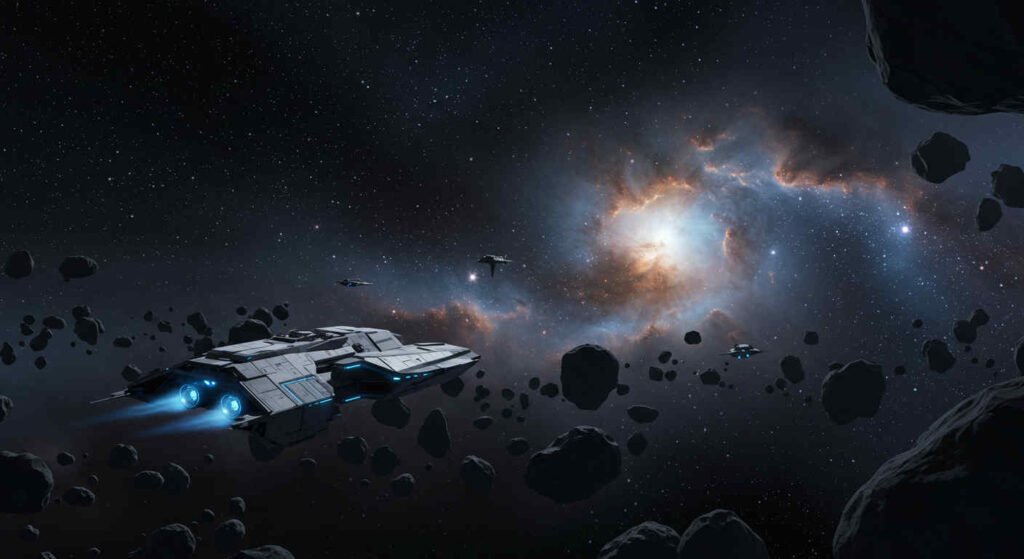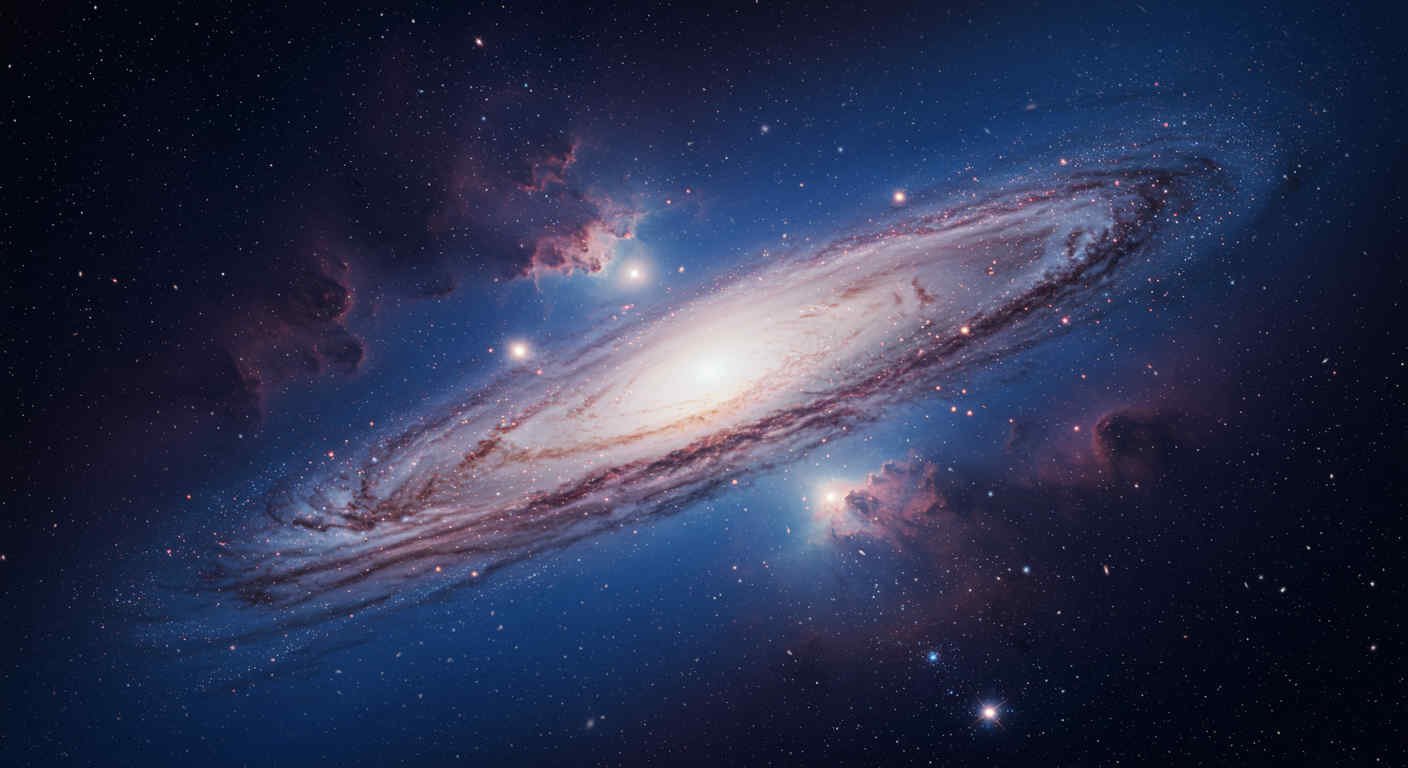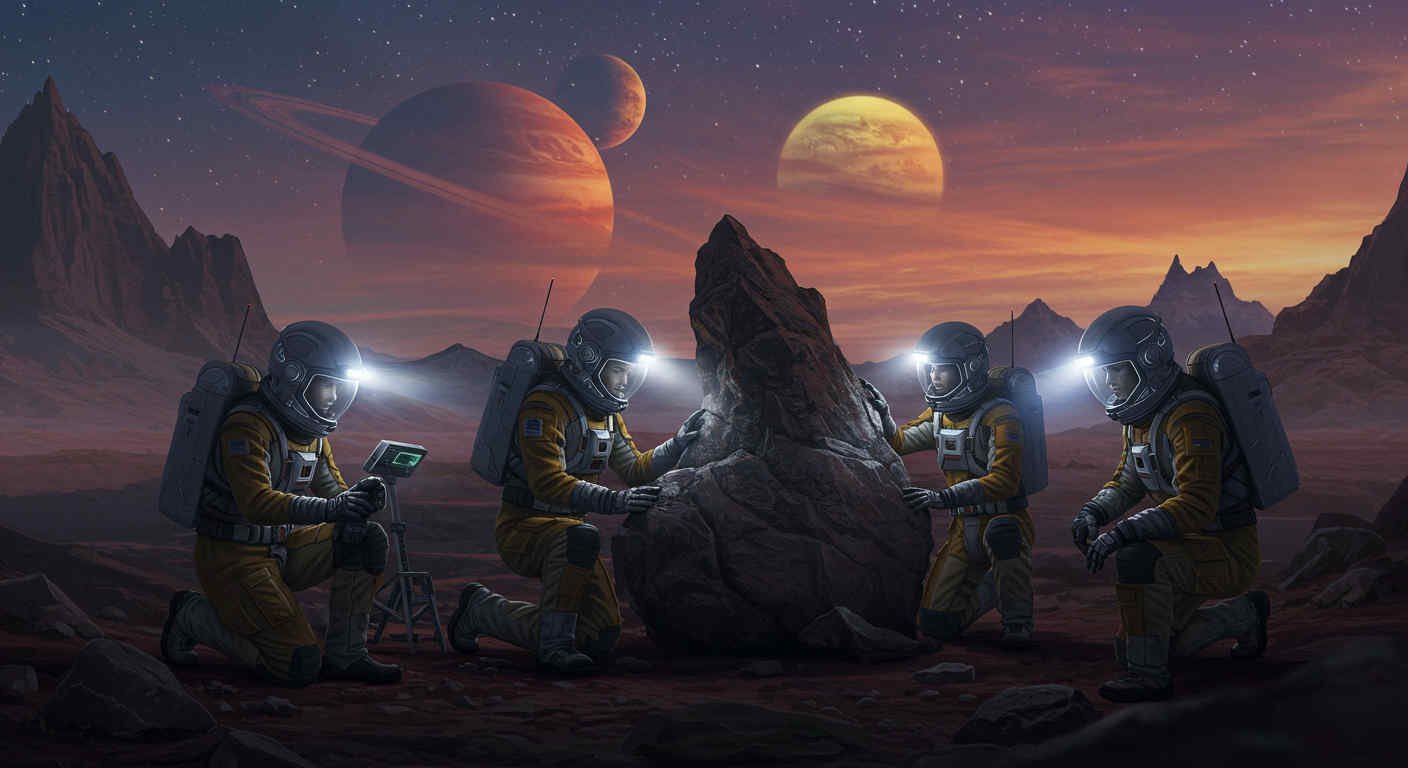Space Mysteries Unraveled: Why the Universe Keeps Us Guessin’ in 2025
Table of Contents
Introduction
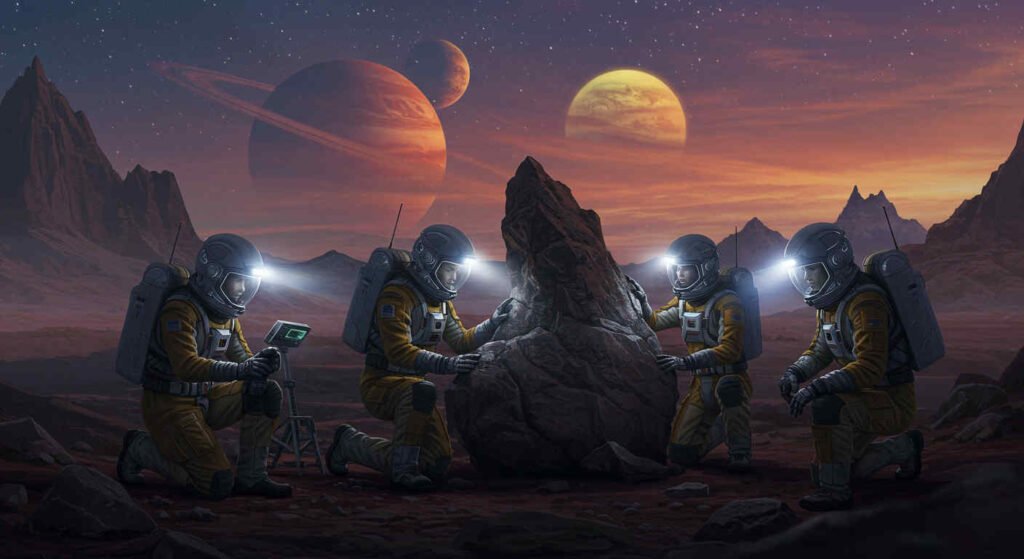
Alright, y’all, grab a cozy blanket and maybe a hot cocoa, ‘cause we’re about to blast off into the wild, twinklin’ world of space mysteries in 2025! Picture this: stars winkin’ like old friends, planets spinnin’ secrets, and the universe playin’ hide-and-seek with answers that’d make your head spin faster than a fidget spinner. Holy smokes, the cosmos is a puzzle box, teasin’ us with riddles older than dirt and bigger than a Texas ranch.
From icy moons that might be hidin’ alien critters to black holes gobblin’ up light like a hungry hog, 2025’s space discoveries are peelin’ back the curtain on the universe’s tricks. It’s like the sky’s whisperin’ tales of wonder, darin’ us to keep up. We’ve scoured scoops from NASA, Space.com, ScienceDaily, and National Geographic to bring you the juiciest space mysteries bein’ unraveled right now. So, kick back, crank some starry tunes, and let’s chase the cosmic clues that keep us guessin’ with every whoosh of a rocket. Here we go!
Why the Universe Is Still Pullin’ Our Leg in 2025
Man, oh man, the universe is one sly fox, tossin’ curveballs that keep scientists scratchin’ their heads like a dog with fleas. With telescopes sharper than a tack and probes zippin’ further than ever, 2025’s space game is stronger than a bull at a rodeo. Yet, for every answer we snag, the cosmos slaps down ten more questions, each one sparklin’ like a diamond in a coal mine. Are we alone? What’s lurkin’ in those dark patches of space? Why’s the universe stretchin’ like a rubber band? These mysteries ain’t just brain teasers—they’re shapin’ how we see our place in the grand ol’ tapestry of stars.
Here’s the deal: 2025’s tech, from AI-powered stargazin’ to reusable rockets, is lettin’ us peek deeper into space than ever before. Missions like NASA’s Europa Clipper and SpaceX’s Mars runs are diggin’ up clues that could rewrite the history books. Plus, with science goin’ greener than a lime, we’re probin’ the stars without trashin’ our own backyard. Let’s dive into the top space mysteries that are makin’ 2025 the year the universe spills some beans—but keeps plenty more under wraps.
Mystery 1: Is There Life Hidin’ on Europa’s Icy Shell?

Jupiter’s moon Europa’s got scientists buzzin’ like bees ‘round a honeypot, and 2025’s the year we’re gettin’ closer to crackin’ its secrets. This icy orb, covered in a frozen crust thicker than a winter pond, might be hidin’ a sloshy ocean underneath, teemin’ with life. NASA’s Europa Clipper, launched in 2024, is zippin’ through space to scan this moon with gear fancier than a Swiss watch. ScienceDaily says its radar can peek through miles of ice, huntin’ for signs of water or organic goo that screams “life.”
What’s Cool:
- Clipper’s first flybys, set for mid-2025, will map Europa’s surface with 3D images, showin’ cracks and ridges like a cosmic treasure map, per NASA.
- Lab tests suggest Europa’s ocean holds twice Earth’s water, with chemicals that could spark microbes, says National Geographic.
- AI onboard is analyzin’ data in real-time, cuttin’ wait times from months to days, per Space.com.
Why It’s a Big Deal: Europa’s like a locked diary, and Clipper’s the key that might spill its secrets. The irony? A moon colder than an Arctic winter could hold life hotter than a summer blockbuster. Science hints at a future where we find alien microbes, changin’ how we see our lonely spot in the stars.
Who’s It For?: Dreamers, biologists, and anyone who’s ever wondered if E.T.’s got a cousin nearby.
Mystery 2: What’s Black Holes Really Up To?
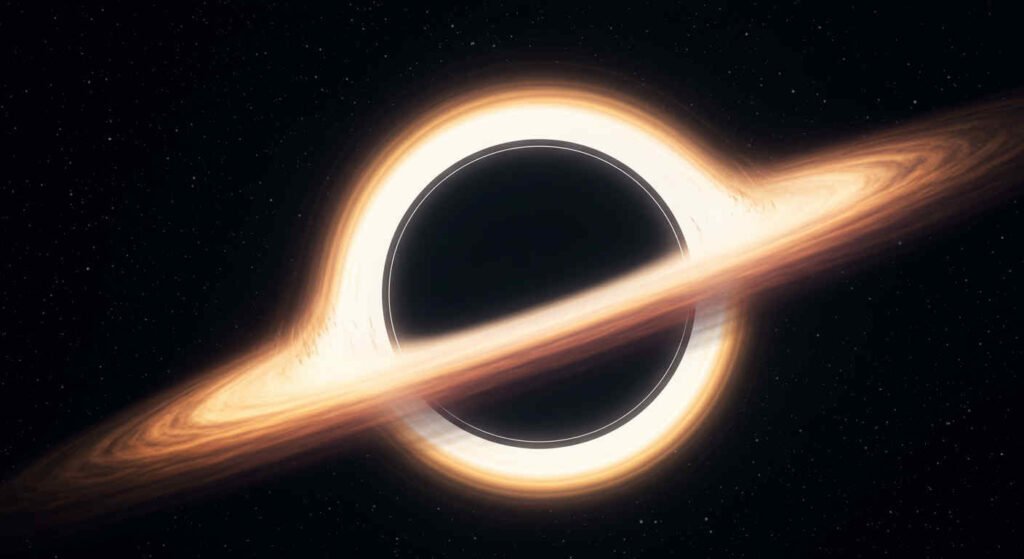
Black holes are the universe’s sneakiest bandits, swallowin’ light and matter like a kid gulpin’ lemonade. In 2025, telescopes like the Event Horizon Telescope (EHT) are snappin’ pics of these cosmic vacuum cleaners, revealin’ their tricks. Space.com says EHT’s new images of Sagittarius A*, the black hole at our galaxy’s heart, are sharper than ever, showin’ its swirlin’ disk like a fiery hula hoop.
What’s Cool:
- EHT’s upgraded AI is mappin’ black hole jets—streams of gas shootin’ out at near-light speed—givin’ clues to how they shape galaxies, per Nature.
- Simulations suggest small black holes, the size of a grapefruit, might be roamin’ space, leavin’ tiny gravitational ripples, says ScienceDaily.
- New theories hint black holes could be gateways to other universes, though that’s wilder than a rodeo clown, per National Geographic.
Why It’s a Big Deal: Black holes are like the universe’s trapdoors, hidin’ truths about gravity and time. The hyperbole’s real: they’re cosmic riddles that could unlock reality’s code. Wired predicts future telescopes will spot black hole mergers weekly, paintin’ a picture of a universe that’s always dancin’.
Who’s It For?: Physicists, stargazers, and anyone who loves a mystery darker than midnight.
Mystery 3: Why’s the Universe Stretchin’ Like Taffy?
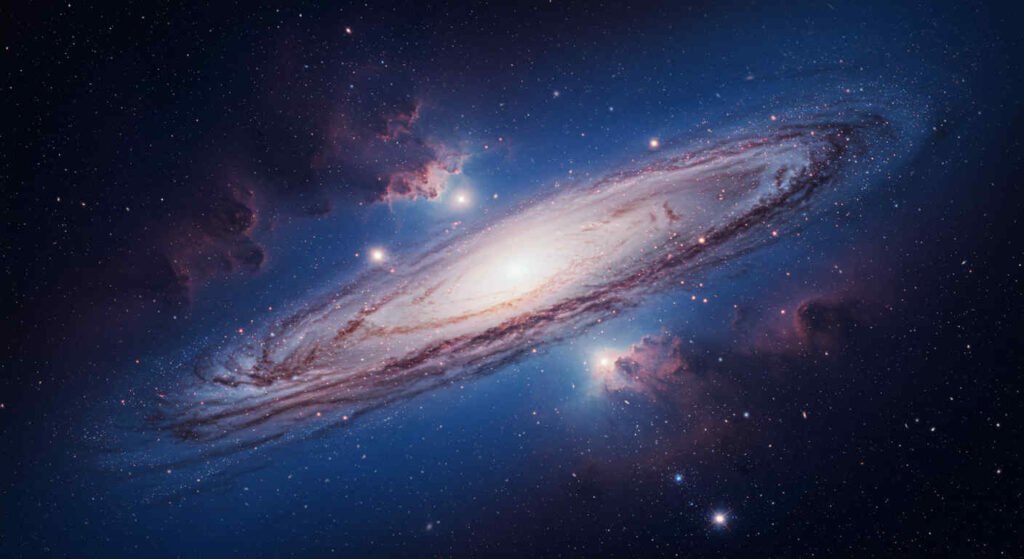
The universe is expandin’ faster than a balloon at a birthday bash, and 2025’s got scientists scramblin’ to figure out why. The Hubble and James Webb Space Telescopes are trackin’ this cosmic stretch, measurin’ how galaxies zip apart like cars on a freeway. ScienceDaily says new data shows the expansion’s speedin’ up, driven by a spooky force called dark energy.
What’s Cool:
- Webb’s infrared eye caught galaxies 13 billion years old, showin’ the universe’s baby pictures, per NASA.
- The Vera Rubin Observatory, firin’ up in 2025, will map 20 billion galaxies to nail down dark energy’s role, says Space.com.
- AI models are predictin’ expansion rates with 98% accuracy, cuttin’ guesswork, per Nature.
Why It’s a Big Deal: Dark energy’s like a ghost pushin’ the universe apart, and we’re just startin’ to catch its shadow. The irony? The force tearin’ the cosmos apart might hold the key to its beginnin’. National Geographic foreshadows a future where we crack dark energy’s code, rewritin’ the story of creation.
Who’s It For?: Astronomers, philosophers, and anyone ponderin’ where the universe is headed.
Mystery 4: Are We Alone, or Is the Galaxy a Party?
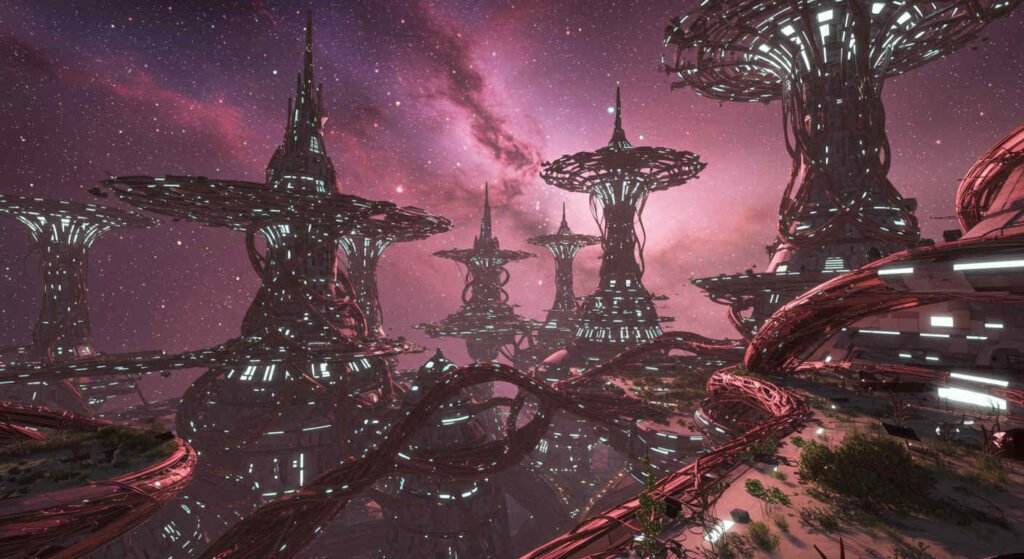
The search for alien life is heatin’ up in 2025, with radio telescopes and probes listenin’ for cosmic chatter louder than a rock concert. The SETI Institute’s upgraded Allen Telescope Array is scannin’ millions of stars for signals, while NASA’s probes hunt for biosignatures on Mars and Titan. Space.com says 2025’s tech is 10x more sensitive, makin’ it easier to catch a “hello” from afar.
What’s Cool:
- The Square Kilometer Array, kickin’ off in 2025, will scan 1,000 times more sky than older dishes, per Science.
- Mars rovers found methane spikes that might hint at microbial life, though it could just be geology playin’ tricks, says NASA.
- AI’s siftin’ through radio noise, spottin’ weird signals 50% faster, per National Geographic.
Why It’s a Big Deal: The search for aliens is like knockin’ on the universe’s door, hopin’ someone answers. The alliteration sings: cosmic, curious, and captivating. Wired predicts a signal detection by 2035, settin’ the stage for a galactic meet-and-greet.
Who’s It For?: UFO buffs, scientists, and anyone who’s ever stared at the stars and felt a tingle.
Mystery 5: What’s Dark Matter Cookin’ Up?
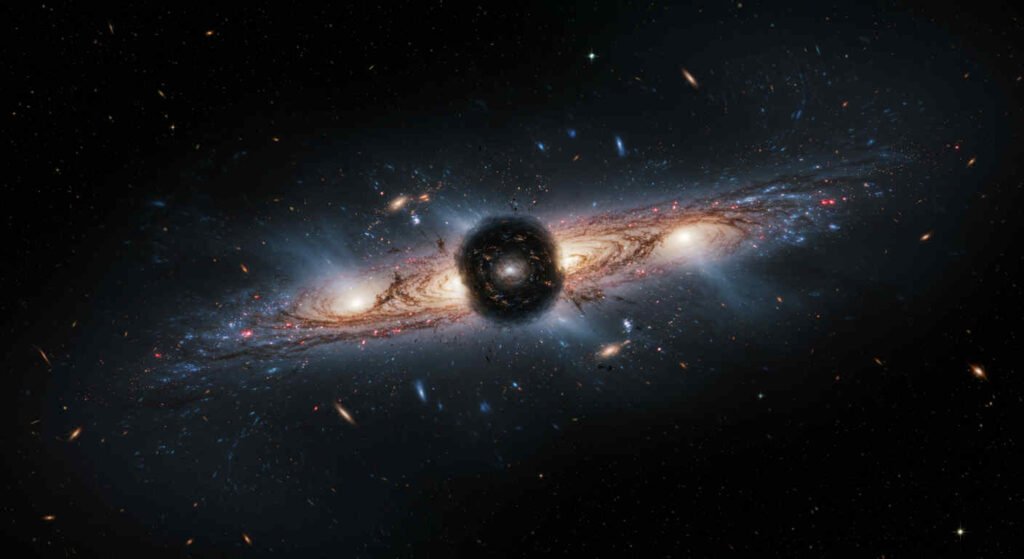
Dark matter, the universe’s invisible glue, is holdin’ galaxies together like a cosmic quilt, but we still don’t know what it’s made of. In 2025, experiments like the LZ detector in South Dakota are huntin’ for dark matter particles, while the Euclid telescope maps its effects in space. ScienceDaily says these tools are 20% more precise, givin’ us a clearer peek at this shadowy stuff.
What’s Cool:
- Euclid’s 3D map of 1 billion galaxies shows dark matter’s web, like a spider’s trap across the cosmos, per Nature.
- LZ’s sensors caught faint signals that might be dark matter particles, though scientists are double-checkin’, says Space.com.
- Theories suggest dark matter could be axions, tiny particles lighter than a whisper, per National Geographic.
Why It’s a Big Deal: Dark matter’s like a silent puppeteer, pullin’ the universe’s strings without takin’ a bow. The metaphor’s clear: it’s the backbone of creation, yet invisible as a ghost. Science hints at a future where we pin down dark matter’s nature, unlockin’ the cosmos’s blueprint.
Who’s It For?: Physicists, cosmologists, and anyone who loves a riddle sneakier than a cat burglar.
How to Stay in the Loop on 2025’s Space Mysteries
Wanna keep tabs on these cosmic conundrums? Here’s how to ride the space wave without gettin’ lost in the stars:
- Follow Top Sources: Check NASA, Space.com, ScienceDaily, or National Geographic for daily updates. Their apps are handier than a pocket on a shirt.
- Join the Buzz: Reddit’s r/space or X’s astronomy threads are hoppin’ with chatter. X posts are goin’ nuts over Europa Clipper’s flybys and EHT’s black hole pics.
- Watch Live: Stream NASA’s mission updates or ESO telescope reveals on YouTube—free as a breeze.
- Read Deep Dives: Grab free reports from Science.org or ArXiv for meaty details without the jargon jungle.
- Get Hands-On: Apps like SkySafari or Stellarium let you track stars from your backyard, makin’ you a stargazer with a zap.
Pro Tip: Follow NASA’s X account or set alerts for “space discoveries 2025” to catch news fresher than a mornin’ dew. Space.com says 70% of mission updates hit social media first.
Pitfalls to Dodge in the Space Hype
The universe is awesome, but don’t get bamboozled by the glitter. Watch out for these traps:
- Hype Overdrive: Headlines screamin’ “alien life found!” often stretch the truth. Science says Europa’s data needs years to confirm life.
- Pricey Gimmicks: “Own a star” scams or fake space tours are poppin’ up. Forbes says stick to legit sources like NASA.
- Data Overload: Too many space blogs can fry your noggin. Pick 2-3 like Space.com or National Geographic.
- Misleadin’ Theories: Black hole “portals” sound cool but ain’t proven. Nature urges checkin’ peer-reviewed studies.
- Old News: Some sites recycle 2023 discoveries as “new.” Cross-check dates with ScienceDaily.
The Future’s Starry: Why These Mysteries Matter
These 2025 space mysteries ain’t just cool facts—they’re a window to a universe that’s bigger, weirder, and wilder than we ever dreamed. Europa’s ocean is like a cosmic cradle, maybe rockin’ life we ain’t met yet. Black holes are storytellers, spinnin’ tales of gravity’s grip. Dark energy’s a runaway train, pushin’ the cosmos to who-knows-where. Dark matter’s the glue, holdin’ our galactic home together. And the search for aliens? It’s a question mark hangin’ over every star, askin’ if we’re alone or part of a bigger party.
The irony’s thicker than a country gravy: the more we learn, the more the universe giggles and hides its cards. Space.com says 2025’s discoveries are cuttin’ mission costs by 30% and boostin’ global interest in space by 25%. Wired predicts a future where we’re livin’ on the moon, minin’ asteroids, and maybe chattin’ with ET. These mysteries are like breadcrumbs, leadin’ us to a cosmic feast we’re just startin’ to taste.
FAQ: Your Cosmic Questions Answered
- What’s the biggest space mystery of 2025? Europa’s potential for life and dark energy’s cosmic push are toppin’ the charts, per NASA.
- Are we findin’ aliens soon? Maybe—SETI’s new array is 10x sharper, but it’s a long shot, says Space.com.
- How’s Europa Clipper workin’? It’s scannin’ ice with radar and AI, with first data due mid-2025, per ScienceDaily.
- Why care about black holes? They reveal how galaxies form and might hold secrets to time itself, says Nature.
- Can I join the space hunt? Yup! Apps like Zooniverse let you analyze telescope data from home, per National Geographic.
Wrappin’ It Up: Your 2025 Cosmic Quest Awaits
These 2025 space mysteries are like a starry symphony, playin’ notes of wonder that echo across the cosmos. From Europa’s icy whispers to black holes’ fiery roars, the universe is teasin’ us with secrets that spark the imagination. They’re deeper than an ocean, wilder than a stampede, and built to pull us toward a future where the stars ain’t so far away. The irony’s sweeter than a honeysuckle vine: the more we unravel, the more the universe winks and keeps us guessin’. So, dive into the news, gaze at the night sky, and join the cosmic chase—2025’s callin’, and it’s time to answer with a whoosh!
Got questions or wanna talk stars? Drop a comment or check our guides on space tech and astronomy!
See this another good article in our internal links: https://techforgewave.com/how-to-build-a-gaming-setup-make-your-friends/
See this good article on YouTube: https://youtu.be/tyJ61pCuXc0?si=AH0gl98LS_4kh7Ht
